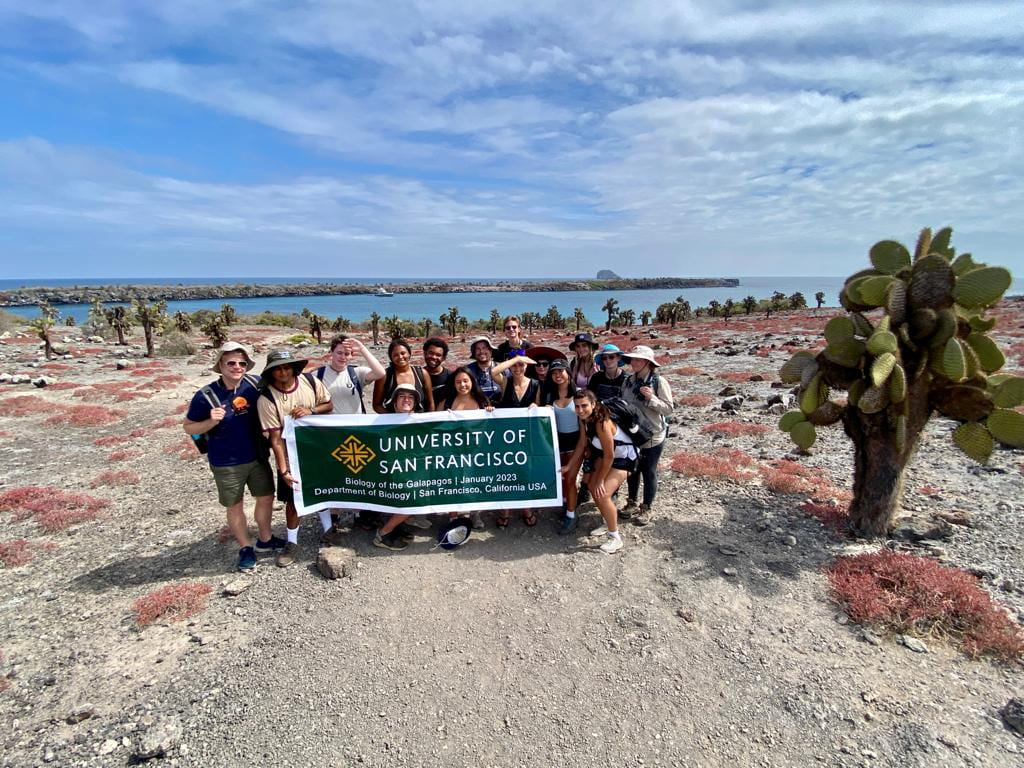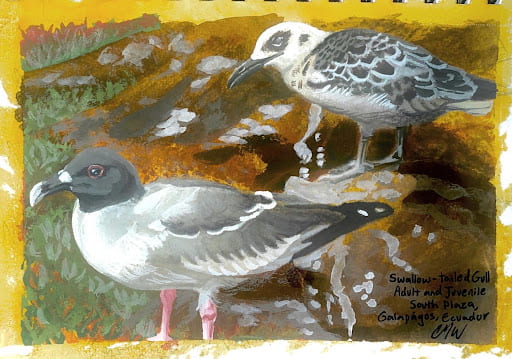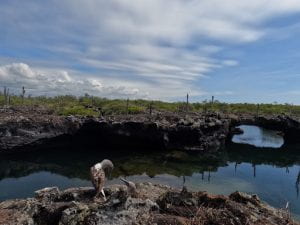A Reflection on the Galapagos: Ecological Management of an Ecological Marvel
 In January of this year, I was able to join the USFCA biology department on a study abroad trip to the Galapagos Islands in Ecuador. While the trip was focused on the biology of the Galapagos, we also learned a lot about conservation efforts underway in the region, and the interesting give and take between preserving the islands while also supporting the people who live there. In this blog I’m going to explain how and why these management decisions are done, and some comparable situations in the United States where we could learn from what is being done in the Galapagos.
In January of this year, I was able to join the USFCA biology department on a study abroad trip to the Galapagos Islands in Ecuador. While the trip was focused on the biology of the Galapagos, we also learned a lot about conservation efforts underway in the region, and the interesting give and take between preserving the islands while also supporting the people who live there. In this blog I’m going to explain how and why these management decisions are done, and some comparable situations in the United States where we could learn from what is being done in the Galapagos.
The Galapagos isn’t perfect, but the Ecuadorian government has made great efforts to ensure this iconic location and its endemic fauna are protected for generations to come. For example, in 1959, 97% of the islands were designated a national park. This protected the habitats and species increasingly at risk from expanding human populations that were using the land for farming. Compare this to the Hawaiian Islands, which is an even more remote and biologically irreplaceable island archipelago: currently the state only protects approximately 3.4% of the islands through state parks and preserves.

Cattle often roam freely in the Galapagos, leading to a reduction in native plant abundance.
Many efforts are also underway to prevent the spread of invasive species. Going through security in the Galapagos is no joke, as all luggage is sorted through and checked by dogs trained to detect organic matter. When traveling between islands, luggage is locked at each port so that nothing can get in or out while in between destinations. This is to prevent spreading invasive species as well as preventing the spread of native species that would otherwise not exist on certain islands. As the Galapagos is a highly studied and iconic place for evolution, authorities attempt to let nature take its course without human interference. With the addition of invasive species such as goats, rats, and a little less than 1,500 others, there is a great need to prevent the majority of these animals and plants from drastically altering the ecosystems of these islands. One invasive species, a parasitic fly, feeds on the eggs and chicks of the small birds in the Galapagos and is contributing to a large decline in Darwin’s Finches. The government, nonprofits, and scientists are working together to create management plans for this and many other ecological issues in the islands.
As efforts are underway to protect the wildlife on land, so are efforts for the conservation of the sealife as well. In 2016, the Ecuadorian government increased the Galapagos Marine Reserve to include one-third of the waters around the Galapagos. This includes about 18% of the coastline being declared a “no-take” zone, where fishing is prohibited (the U.S. government currently only protects 0.3% of Hawaii’s coastal waters in this way).

Illustration of Swallow-tailed Gulls, who along with many other seabirds have breeding colonies on the Plaza Islands, which are highly regulated tourist sites.
On our trip, we had the absolute pleasure of being stopped by the “boat police” who were checking if we had the permits to be on a certain island. In the Galapagos, tourists must have an Ecuadorian guide who is a resident of the Galapagos to take them to ecotourism destinations, and these guides must obtain permits for a time-slot on every island and place visited. This caused us to be rushed several times as usually the time limit was three hours or less, but it was lovely to be able to see the islands with only our group present – especially because this lessens the amount of disturbance tourists cause the wildlife. Additionally, as a tourist in the Galapagos, you are only allowed to visit 90 days out of the year unless you are an official resident – and it is not easy to become a resident of the Galapagos! This prevents people from buying properties or making the islands their vacation home, like the U.S. allows in Hawaii.
Even though it is difficult to become a resident, the human population in the Galapagos has increased from less than 2,000 people in the late 1950s to more than 30,000 people today. Such a rapid increase has placed stress on the rudimentary infrastructure on the islands. Currently, focus is being placed on creating sustainable sewage treatment systems, and one was recently built on the island of Isabella. There are plans to create another in the highlands of Santa Cruz Island, and hopefully this model will pave the way for sustainable development to support locals without compromising the environment. Who knows, perhaps one day I will return to the Galapagos and be able to put toilet paper in the toilet!

Los Túneles, Isla Isabela, Galapagos Islands
One of the most important ways in which the Galapagos government preserves the islands is through practicing responsible tourism policies. This begins before landing on the island by obtaining a tourist pass that lists the dates you are scheduled to remain in the Galapagos and acts as a passport of sorts so that officials know tourists’ whereabouts. Upon arrival, each adult pays a $100 fee which goes to support conservation work and management on the islands. On the islands themselves, single-use plastics are banned to prevent plastic pollution in the environment and the unnecessary creation of waste. Common rules implemented in the Galapagos include a ban on leaving designated trails, getting within six feet of wildlife, feeding wildlife, buying souvenirs made from organic materials found on the islands, and using flash photography. All of these rules allow tourists to experience a truly wild place without altering the landscape or its inhabitants.
Being able to visit the Galapagos Islands was, as it usually is for most, a once-in-a-lifetime opportunity. The biology and ecology of these islands and the species that have colonized and evolved on them is extraordinary, but it was equally inspiring to see all of the regulations put into place to keep them safe. The Galapagos is a truly incredible case study for how to responsibly conduct ecotourism and provided me with the knowledge that mass tourism can be done while preserving the ecosystem. I compared the Galapagos to Hawaii mostly because they are very similar in many ways, but examples from the Galapagos can be applied to many ecotourism destinations – and land management as a whole. I encourage you to compare what you learned in this article with what is practiced at your favorite natural space and perhaps come up with some ways management can be improved within our own ecosystems right here in North America.
Sources:
“About Galapagos.” Galapagos Conservation Trust, 4 July 2022, https://galapagosconservation.org.uk/about-galapagos/.
“Interactive Timeline.” Discovering Galapagos, 6 Dec. 2021, https://www.discoveringgalapagos.org.uk/discover/human-history/interactive-timeline/interactive-timeline/.
“Natural Area Reserves System.” Division of Forestry and Wildlife: Native Ecosystems Protection & Management, 19 Sept. 2022, https://dlnr.hawaii.gov/ecosystems/nars/.
Marine Protected Areas in Hawaii. DLNR Division of Aquatic Resources, 9 Mar. 2005, https://dlnr.hawaii.gov/dar/files/2014/04/MPApub.pdf.
Moity N (2018) Evaluation of No-Take Zones in the Galapagos Marine Reserve, Zoning Plan 2000. Front. Mar. Sci. 5:244.


